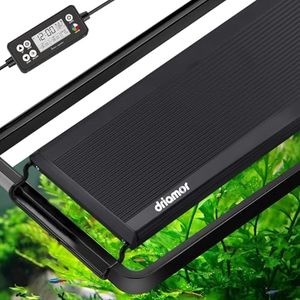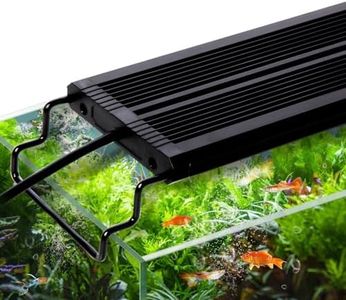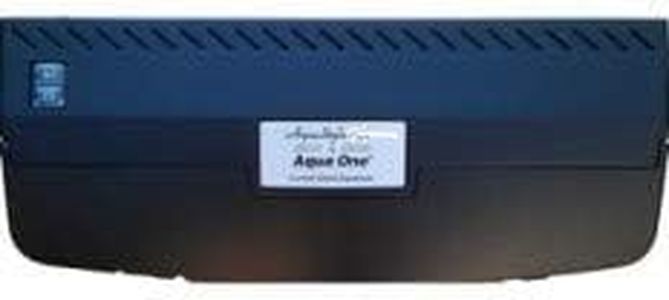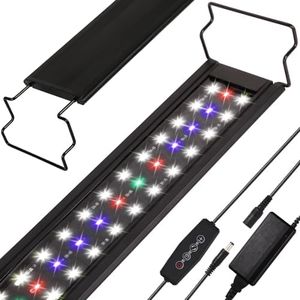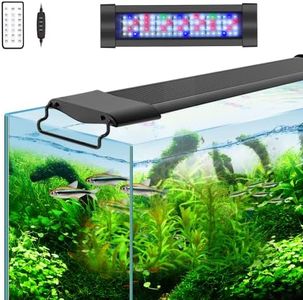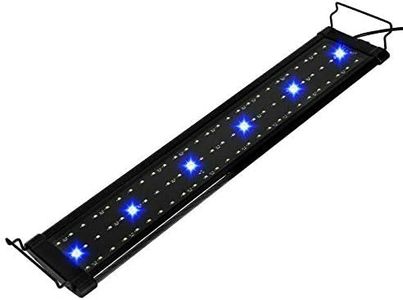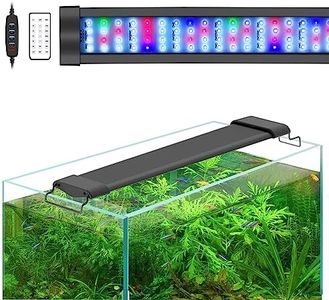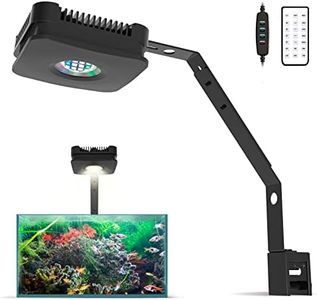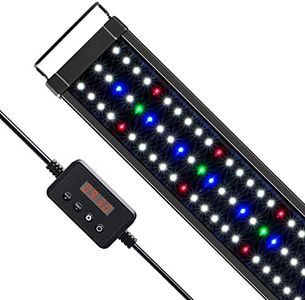We Use CookiesWe use cookies to enhance the security, performance,
functionality and for analytical and promotional activities. By continuing to browse this site you
are agreeing to our privacy policy
10 Best Planted Tank Light
From leading brands and best sellers available on the web.Buying Guide for the Best Planted Tank Light
When it comes to buying a light for your planted aquarium, the goal is to help your plants thrive by providing the right kind and amount of light. The right light will encourage healthy plant growth, vibrant colors, and also help keep algae under control. Picking the right light depends on the kind of plants you have, the depth of your tank, and your goals for the aquarium. It’s important to understand some key specifications so you can make the best choice for your planted tank.Light Intensity (PAR)PAR stands for Photosynthetically Active Radiation, which is the portion of light plants can use for photosynthesis. This is a very important spec because not all lights provide enough usable energy for aquatic plants. Low PAR values are suitable for easy, low-light plants (like ferns and mosses), while medium PAR suits a wider variety of common plants, and high PAR is needed for demanding species and dense, lush growth. To pick the right one, think about the types of plants you want—hardy, low-light species need less intense light, while colorful or carpeting plants need more light. Also account for tank depth, as deeper tanks need stronger lighting to penetrate to the bottom.
Spectrum (Kelvin Rating)Spectrum refers to the color or quality of the light, often described in 'Kelvin' temperature. Aquarium plants use certain wavelengths of light, usually in the blue and red spectrum, for growth. Lights with a Kelvin rating of 5000K to 7000K are generally closest to natural daylight and work well for plant growth and appearance. Lower ratings make the tank look warmer (more yellow), while higher ratings look cooler (more blue). For most tanks, sticking within the 5000-7000K range provides a good balance for both plant health and tank aesthetics.
Coverage AreaCoverage area describes how much of your tank the light will effectively reach. A light that is too short or lacks power at the edges may leave some of your plants in shadow, leading to uneven growth. Make sure the length of the light closely matches the length of your tank, and that the manufacturer states it can cover the tank’s dimensions. Think about the plant placement—if you’re growing plants everywhere, ensure whole-tank coverage, but if you have plants mainly in the center, smaller lights can be fine.
Adjustability/ControlMany modern aquarium lights offer control over brightness (dimming), spectrum (color adjustment), and programmable on/off schedules. This is important because it lets you fine-tune the light to your plants’ needs and your viewing preferences, and also simulate natural day/night cycles for healthier plants. If you like to experiment or want to avoid algae problems, look for adjustable lights. For set-and-forget setups, simple lights with basic timers can be enough.
Water ResistanceSince these lights are positioned over water, water resistance is important for safety and longevity. Some lights are well-sealed against splashes or humidity, while others are more sensitive to moisture. If you have a tank with a lid, you can be a bit more relaxed about this; for open-top tanks or where frequent splashes occur, prioritize lights rated for water resistance.
Energy EfficiencyEnergy efficiency tells you how much electricity the light uses to produce a certain amount of brightness. LED lights are usually the most efficient, staying cool and saving power. Efficient lights mean less heat build-up (which can harm plants and fish), and lower energy bills. If your tank is large or the light will be on for many hours a day, picking an efficient model is particularly important.
